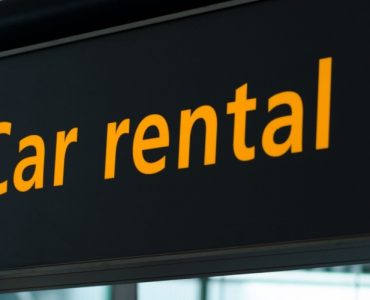Here are your top tips for long-term car rentals! When considering renting a car, there are a few important things and preparations to take into consideration. Renting a car while traveling means you have the freedom to plan your itinerary and visit a destination at your own pace and without being limited by public transport schedules. And then, in addition to the freedom it gives you, a rental can offer more comfort than other means of transport, especially for long journeys or trips with large luggage. Additionally, in some situations, renting a car can be cheaper than other forms of transportation, especially if you are traveling in a group or plan to visit multiple locations.
Contents
- 1 Understanding Long Term Car Rental
- 2 Finding a Car Rental Company
- 3 How is long-term rental different from leasing?
- 4 Check your driving license
- 5 Check the minimum age and years of driving required
- 6 Advantages of long-term car rental
- 7 Estimate your rental budget
- 8 Find out about driving abroad
- 9 Choose the right vehicle
- 10 Check the condition of the vehicle
Understanding Long Term Car Rental
Long-term car rental typically involves renting a vehicle for more than a month, with rental periods ranging from four weeks to an impressive 24 months. Availability of long-term rental options may vary by country and rental agency.
Finding a Car Rental Company

To rent a car in the country where you are traveling, the best option to find the best value for money is Yolcu360!
Major car rental companies are usually available in many countries, but there may also be local car rental agencies. By using a comparator, you can at a glance see the types of vehicles available, the possible prices and conditions on your route.
One of the great advantages of car rentals while traveling is the possibility of returning your vehicle to an agency other than that of collection to go from point A to point B. You can thus make a route which does not require you to return on your steps and to see as many countries as possible.
How is long-term rental different from leasing?
It is essential to distinguish between long-term rental and leasing. Leasing usually involves a contract with a car dealership for a fixed period of time, usually 2 to 5 years. On the other hand, long-term rental extends for a period of up to 24 months. Here are the main differences:
Responsibility: With leasing, you often take on more responsibility for maintenance, repairs and tire changes, while long-term rental agencies take care of these tasks for you.
Duration: Leasing contracts are generally longer, while long-term rentals offer greater flexibility in choosing the rental period.
Check-ins: When you rent a car long-term, you may need to check in every few months to make sure everything is in good condition.
Check your driving license

Check the driving license requirements in the country where you are going to rent the car. Make sure your driving license is valid in the country where you plan to drive as some countries require an international driving license or a driving license in a specific language.
In addition, carefully check the number of drivers authorized for the rental and ensure that each driver is in compliance (license, age, seniority, etc.)
Check the minimum age and years of driving required
Please note, some countries require that the renter of a vehicle be over 21 years old and have at least one year of driving license! For certain vehicle models, agencies may require 2 years of license or a driver over 25 years old.
Please note, generally, a young driver will pay more to rent a vehicle. If you have had your license for less than 2 or 5 years and if you are less than 25 years old, the costs are much higher for insurance reasons.
Advantages of long-term car rental

Choosing a long-term car rental has several advantages:
Flexibility without ownership: You benefit from the flexibility of a vehicle without the commitment of owning it.
Fewer maintenance and repair responsibilities: Long-term rentals typically include maintenance and repair services, reducing your financial burden.
No high acquisition costs: Unlike buying a car, long-term leasing involves a manageable monthly rental fee that often covers all expenses.
Estimate your rental budget
To estimate your car rental budget, make sure you understand the total cost of renting the car, including additional costs such as insurance fees, additional mileage fees, optional equipment (GPS, seat child, etc.) and security deposit fees. Remember to add fuel and toll costs to your budget,
Make sure that the daily mileage limit included in your rental package is sufficient. Please note, the rule is to return the vehicle with the same amount of fuel as when it was collected. Account for these liters of gasoline in your budget.
Find out about driving abroad

In some countries, driving is on the right, while in other countries, it is on the left. Make sure you familiarize yourself with the driving rules and road signs before hitting the road abroad!
Additionally, driving rules can vary from country to country, so it’s important to find out about local driving rules before hitting the road. This may include speed limits, seat belt requirements and parking restrictions.
Before leaving, to understand the road network of the country visited, draw up an itinerary to estimate journey times. Be careful, if sites like Google Maps tell you a travel time, in destinations where road networks are in poor condition and/or where traffic is problematic, this information may be unreliable. Additionally, if you are traveling in remote areas, GPS data may be limited.
Choose the right vehicle
For budget reasons, you might be tempted to choose the most economical model (small category A city car) but if you are going for a long road trip or a trip with more than 3 people, a higher category car can radically change your comfort and that of your passengers.
Compare fuel consumption because while a vehicle may be more expensive to rent, fuel costs can sometimes be more attractive over the duration of the trip. In some countries, you will be forced to opt for an automatic box, like in the United States where manual boxes are almost non-existent.
If you rent an electric car, find out about the on-site charging network and the constraints this imposes on you every day if you drive a lot. Remember to take a look at the specifics of the vehicle and its dashboard (via the official documentation or videos on the web) so as not to be surprised by its operation and its particularities.
Check the condition of the vehicle

Allow time on the day of vehicle pickup and return for the vehicle to be thoroughly checked when you pick it up and drop it off.
Before hitting the road, carefully inspect the rental car for any damage or mechanical problems. Report any problems to the rental company immediately to avoid being held responsible for any damage you did not cause. Take a photo of the odometer and the least defects to have arguments with supporting evidence in the event of disagreement.
Verify that all locally required safety equipment is present. Check for the presence of vehicle documents, a warning triangle, reflective jackets, the spare wheel and the jack. Make sure the spare wheel is not punctured or too worn. Before you get behind the wheel, ask the rental company to provide everything you need.










Add comment